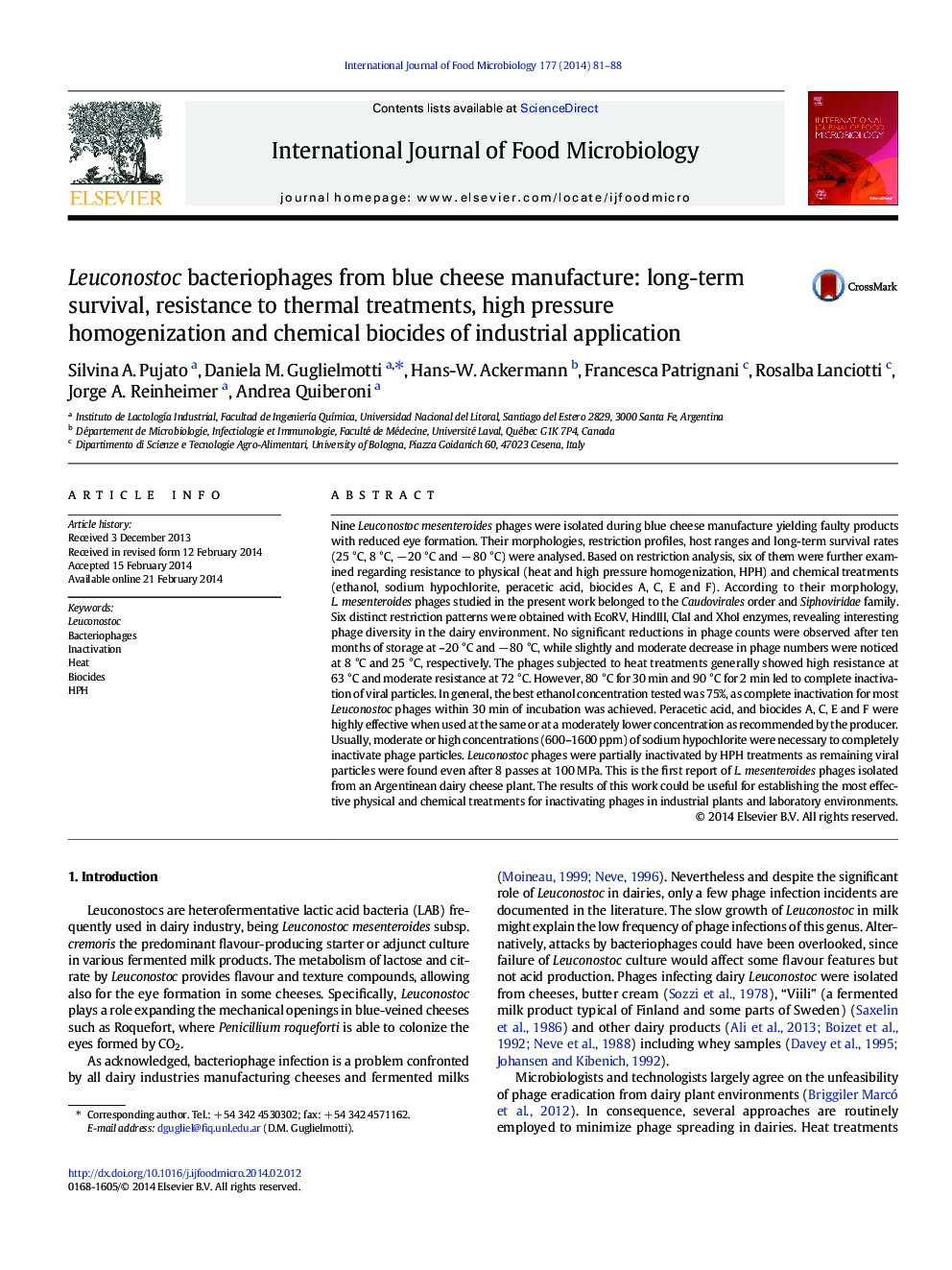| کد مقاله | کد نشریه | سال انتشار | مقاله انگلیسی | نسخه تمام متن |
|---|---|---|---|---|
| 4366974 | 1616605 | 2014 | 8 صفحه PDF | دانلود رایگان |

• Six Leuconostoc mesenteroides phages from blue cheese manufactures were characterized.
• Some of them showed high resistance to heat treatments.
• Moderate/high levels of sodium hypochlorite were necessary to inactivate phages.
• Low concentrations of peracetic acid, and biocides A, C, E and F were highly effective.
• HPH treatments did not assure complete phage inactivation.
Nine Leuconostoc mesenteroides phages were isolated during blue cheese manufacture yielding faulty products with reduced eye formation. Their morphologies, restriction profiles, host ranges and long-term survival rates (25 °C, 8 °C, − 20 °C and − 80 °C) were analysed. Based on restriction analysis, six of them were further examined regarding resistance to physical (heat and high pressure homogenization, HPH) and chemical treatments (ethanol, sodium hypochlorite, peracetic acid, biocides A, C, E and F). According to their morphology, L. mesenteroides phages studied in the present work belonged to the Caudovirales order and Siphoviridae family. Six distinct restriction patterns were obtained with EcoRV, HindIII, ClaI and XhoI enzymes, revealing interesting phage diversity in the dairy environment. No significant reductions in phage counts were observed after ten months of storage at –20 °C and − 80 °C, while slightly and moderate decrease in phage numbers were noticed at 8 °C and 25 °C, respectively. The phages subjected to heat treatments generally showed high resistance at 63 °C and moderate resistance at 72 °C. However, 80 °C for 30 min and 90 °C for 2 min led to complete inactivation of viral particles. In general, the best ethanol concentration tested was 75%, as complete inactivation for most Leuconostoc phages within 30 min of incubation was achieved. Peracetic acid, and biocides A, C, E and F were highly effective when used at the same or at a moderately lower concentration as recommended by the producer. Usually, moderate or high concentrations (600–1600 ppm) of sodium hypochlorite were necessary to completely inactivate phage particles. Leuconostoc phages were partially inactivated by HPH treatments as remaining viral particles were found even after 8 passes at 100 MPa. This is the first report of L. mesenteroides phages isolated from an Argentinean dairy cheese plant. The results of this work could be useful for establishing the most effective physical and chemical treatments for inactivating phages in industrial plants and laboratory environments.
Journal: International Journal of Food Microbiology - Volume 177, 2 May 2014, Pages 81–88